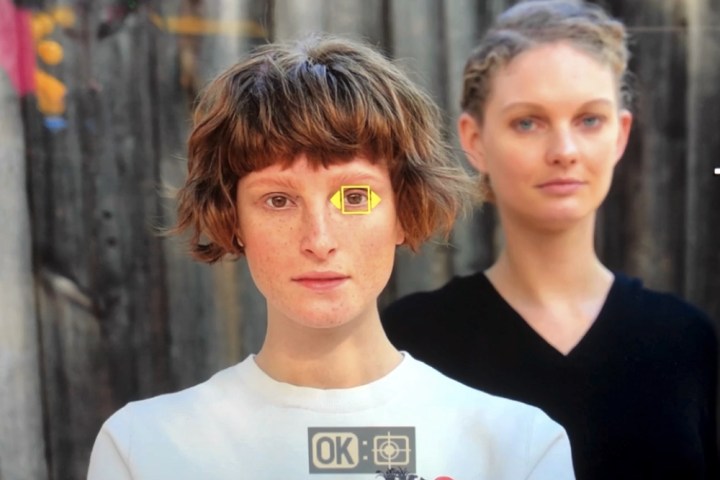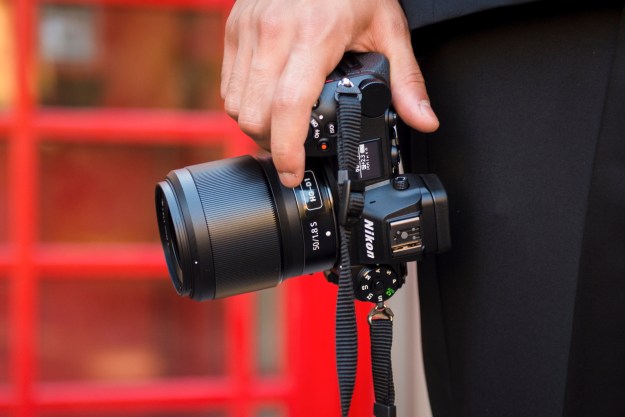
It’s official: Nikon’s new mirrorless cameras are already getting new features thanks to firmware updates. The Japanese camera giant announced that eye-tracking support would be rolled out to the Z7 and Z6 cameras on May 16.
Nikon first announced that several new features were under development for the Z7 and Z6, including CFexpress support, eye-detection autofocus, and RAW video output, during CES 2019. On February 13, Nikon gave the first two of these updates — Eye AF and increased autofocus and autoexposure performance — a launch date of May 2019. But a teaser video released on Nikon’s European and Asian YouTube channels hones that date: It’s not just May, it’s May 16.
Eye AF, Nikon says, will make capturing sharp eyes easier when photographing portraits as well as street and event photography. The software helps automatically detect the eyes to help avoid misplaced focal points. Eye AF, if done right, could be a welcome addition to the series — since options like the Sony a7R III already includes Eye AF.
Nikon says photographers will have the option to select which eye to focus on in images with multiple people. The options will also be available in both AF-S anf AF-C modes.

Adding to the list of previously teased firmware updates, Nikon says that autofocus and autoexposure improvements will also be coming to the Z6 and Z7 with a firmware update in May. The update will improve low light autofocus performance and also allow access to autoexposure adjustments while shooting in the extended high-speed burst mode.
The Z6 and Z7’s XQD memory card slot will also be able to accommodate CFexpress cards with an upcoming firmware update. CFexpress and XQD both similar formats larger than the traditional SD card, with a few notable differences. CFexpress cards limit out at certain speeds and capacities, while XQD cards are fast and could be even faster in the future.
Nikon lists that speed along with a handful of other reasons like capacity, transfer rates, and durability as reasons why the company went with the XQD instead of the older CFexpress format. However, Sony is the only major manufacturer producing XQD cards and they can sell for nearly $150 for a 64GB card. The firmware update will open up more options — and allow photographers who already had CFexpress cards to put those cards back to use. That update doesn’t yet have a launch date.
Finally, upcoming firmware will allow support for RAW video output over HDMI. This will enable the Atomos Ninja V external recorder to save 12-bit ProRes RAW files from the Z6 and Z7, but RAW video will not be recordable in-camera.
While some of the firmware doesn’t yet have a launch date, models with the updated firmware were on display during CES. Nikon says the firmware updates are based on user feedback.
At CES, Nikon also launched the NIKKOR Z 14-30mm f/4 S lens, the widest lens yet for the Z series. The lens is also unique in that, despite the ultra-wide angle, the lens still accepts filters at the front, because the front element isn’t as rounded as most full frame ultra-wide-angle lenses. Nikon also says that the lens is lighter and more compact than the similar F-mount lens. A filmmakers’ kit for the Nikon Z6 was also part of Nikon’s CES announcements.
Updated on April 28 with official May 16 date.
Editors' Recommendations
- The Nikon Z 7 II and Z 6 II are coming October 14: Here’s what we want to see
- Nikon adds pet eye AF with major firmware update for the Z 6 and Z 7
- Nikon Z 50 vs. Canon EOS M6 Mark II: Nikon’s newest takes on Canon’s champ
- Canon EOS RP vs. Nikon Z 6: Which company does entry-level mirrorless best?
- Nikon recalls batches of Z 6 and Z 7 cameras for faulty stabilization systems




